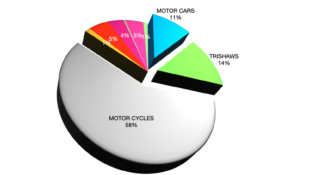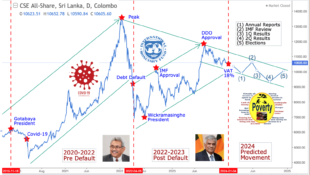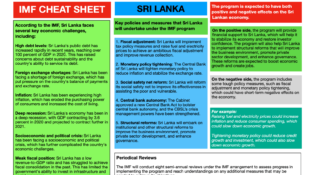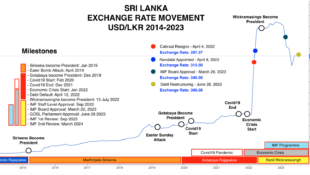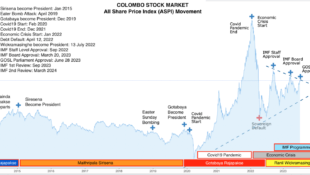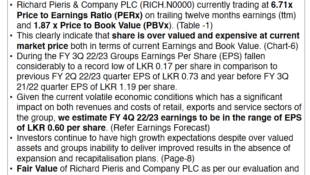Sri Lanka's peg with the US dollar which has served as a solid external anchor for inflation since 2009 collapsed under pressure from over 200 billion rupees of money printed by the Central Bank to off-set (sterilize) foreign exchange sales.
The rupee fell from around 114 to 134 to the US dollar after contradictory state interventions in forex and money markets were eased beginning from February 2014.
"We have already seen inflation going up to around 9.0 percent, but we think this is mostly a price level increase," IMF's resident representative in Sri Lanka Koshy Mathai told a forum organized by Sri Lanka's Acuity, an investment bank and DailyFT, a financial newspaper.
"So the measure of inflation has increased, but we do not expect to see continued inflation month after month after month.
"We expect the statistical effect to fade out as the months move on."
A depreciation of the currency triggers a structural change in the price of traded goods, both imports and exports when measured by the domestic currency unit.
As foreign reserves are sold down by the Central Bank, the trade gap widens and the current account deficit of the balance of payments expands to unsustainable levels running beyond the net capital inflows to the country.
Flexibility in the exchange rate, which stops sterilized foreign exchange sales is needed to arrest the vicious cycle as happened in February 2012.
But during a balance of payments crisis, when liquidity tightens due to less-than-100-percent sterilization of central bank sales of foreign exchange, interest rates also move up, even as credit volumes increase.
Rising interest rates will eventually slow credit, which can slow new inflation after the crisis is ended.
Persistently high interest rates can trigger a banking crisis, which can even result in deflation (actual falls in prices) as bank credit turns negative, and the currency appreciates.
Sri Lanka had similar experiences after the 2000/2001 and 2008/2009 balance of payments crises, where risk free rates hit close to 20 percent.

If the depreciation is not reversed it will also feed into non-traded goods and services via higher salaries and other input costs. Any temporary gains seen by the traded goods sector, including exporters, will also be eventually lost by demands for salary increases.
But temporary increases in profits, at the expense of lower living standards of workers can drive capital into exports, increasing capacity as the entire population gets poorer.
"Over the medium term, there can be beneficial effects on growth as well, because exporters will definitely has some benefit and they will be able to export more. And that will drive growth and that will help to create more jobs."
Currency depreciation also destroys the real value of financial savings denominated in the local currency, which also destroys future investible capital, but it also helps highly leveraged entities, which include businesses and deficit spending states.
Currency depreciation also ensures that productivity driven gains in competitiveness are not needed for the production sector, especially exporters, as profits can easily be made at the expense of real wages of workers at least temporarily.
http://www.lbo.lk/fullstory.php?nid=419459191
 would enable you to enjoy an array of other services such as Member Rankings, User Groups, Own Posts & Profile, Exclusive Research, Live Chat Box etc..
would enable you to enjoy an array of other services such as Member Rankings, User Groups, Own Posts & Profile, Exclusive Research, Live Chat Box etc.. 
 Home
Home










